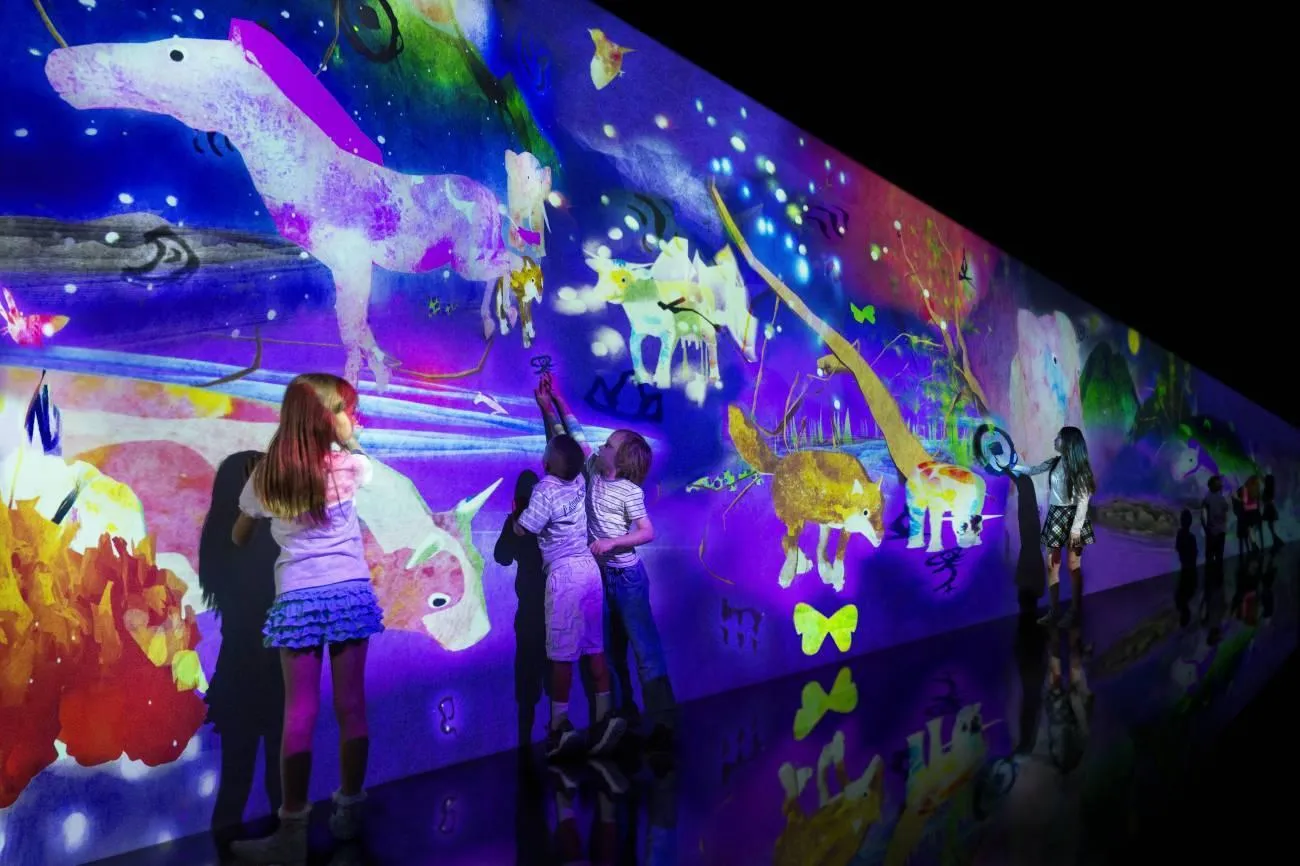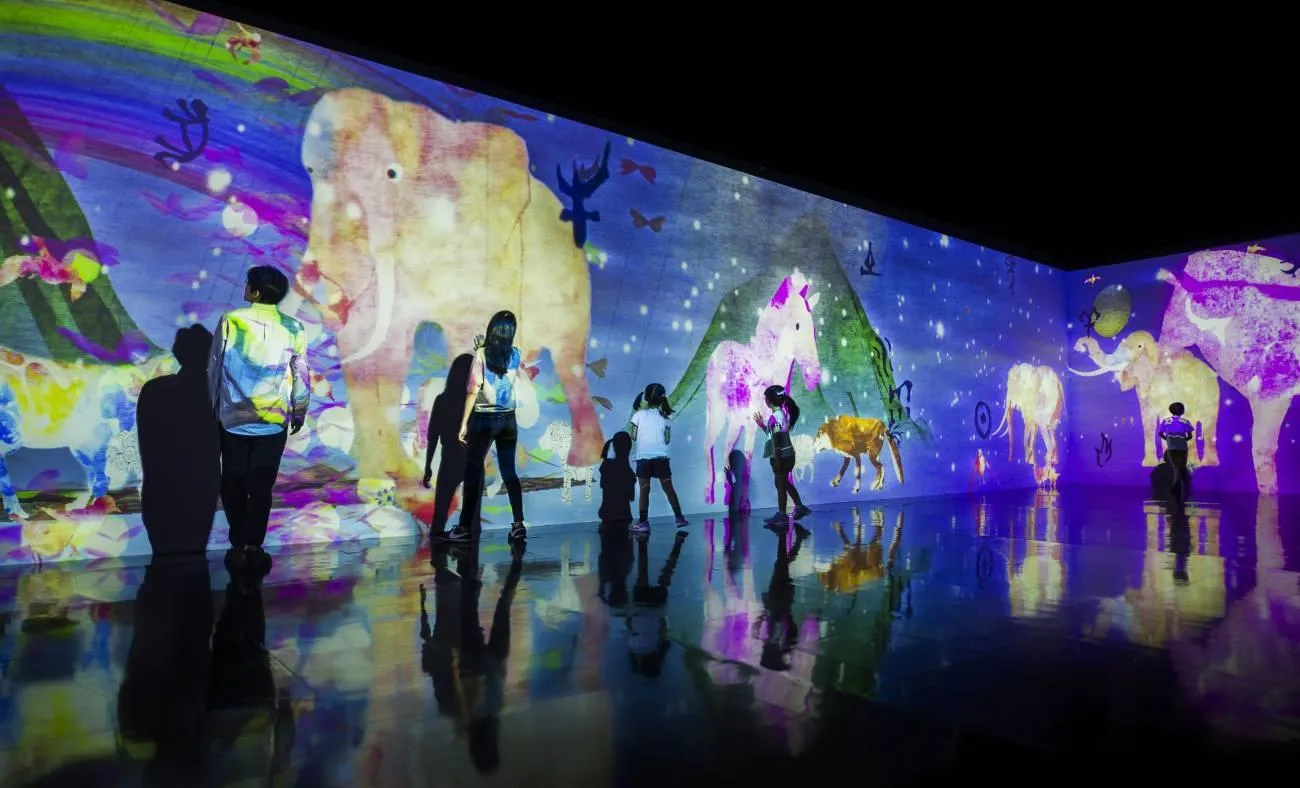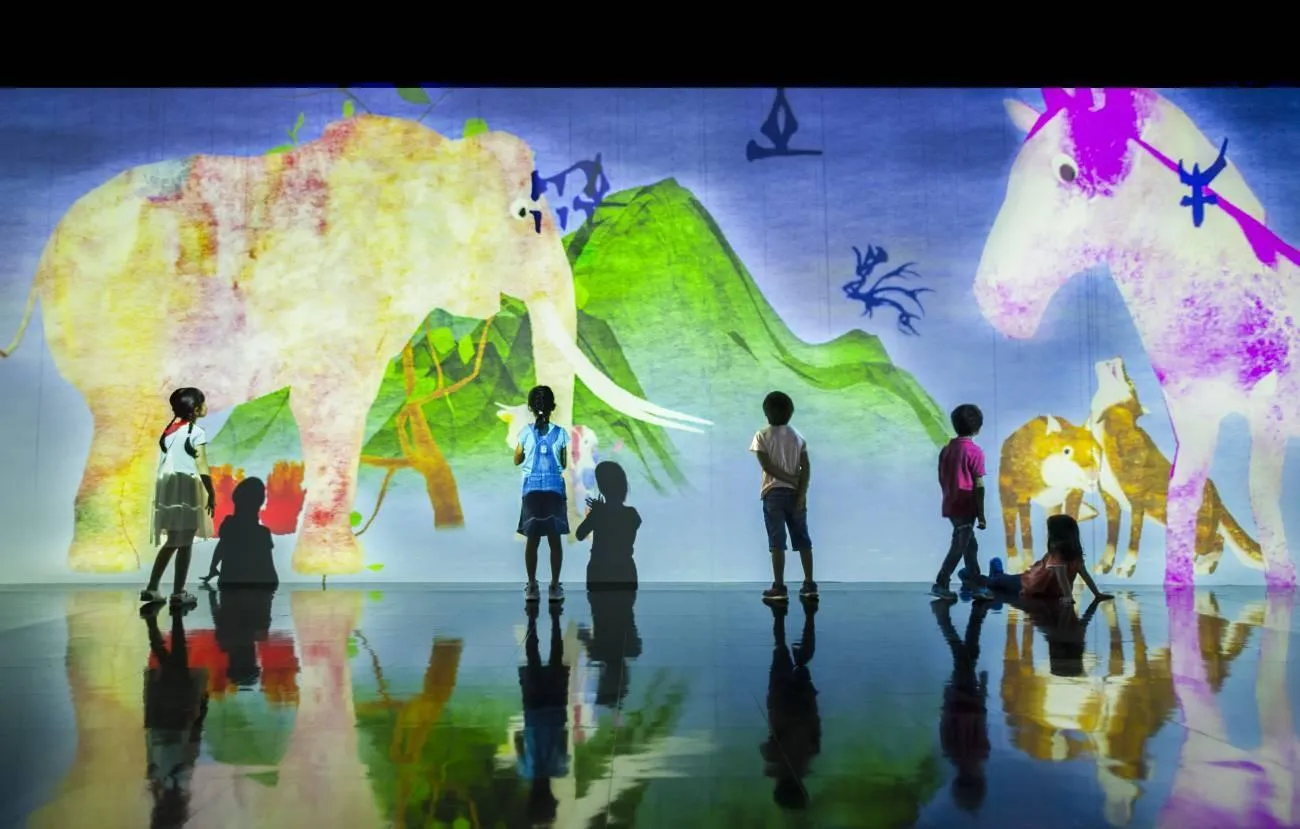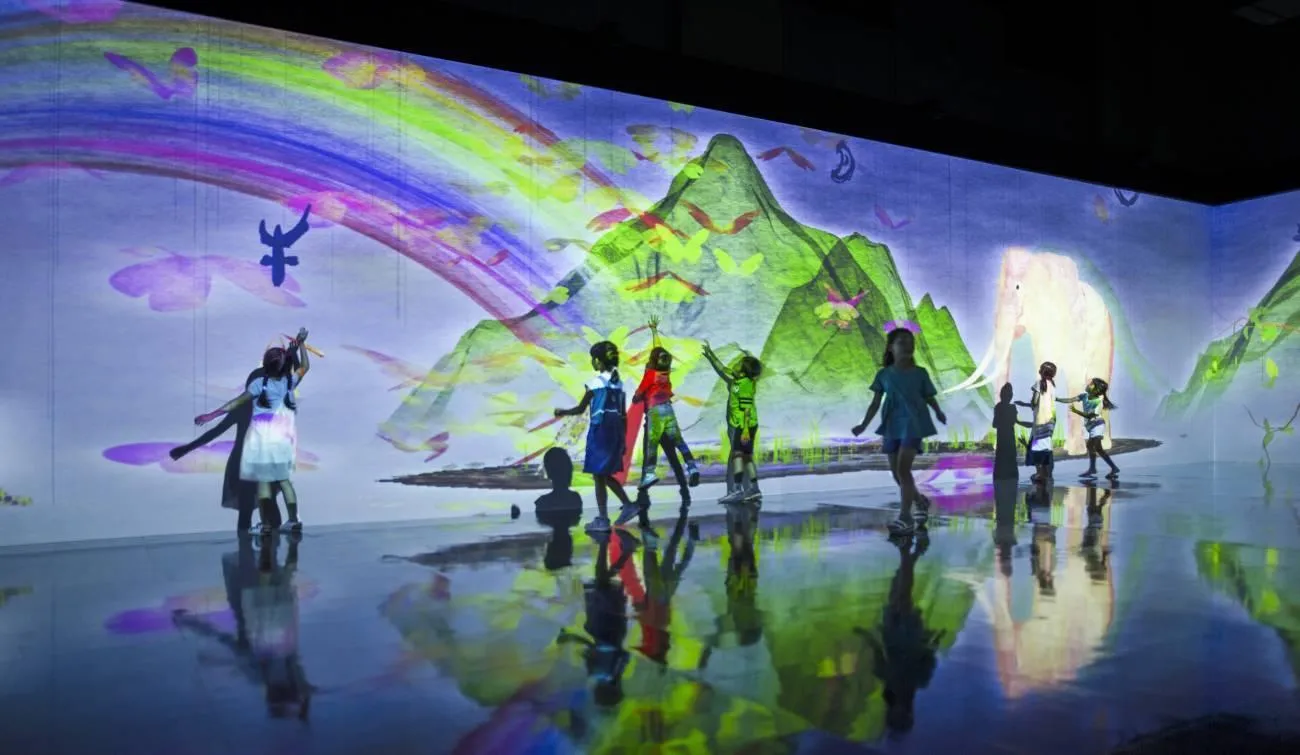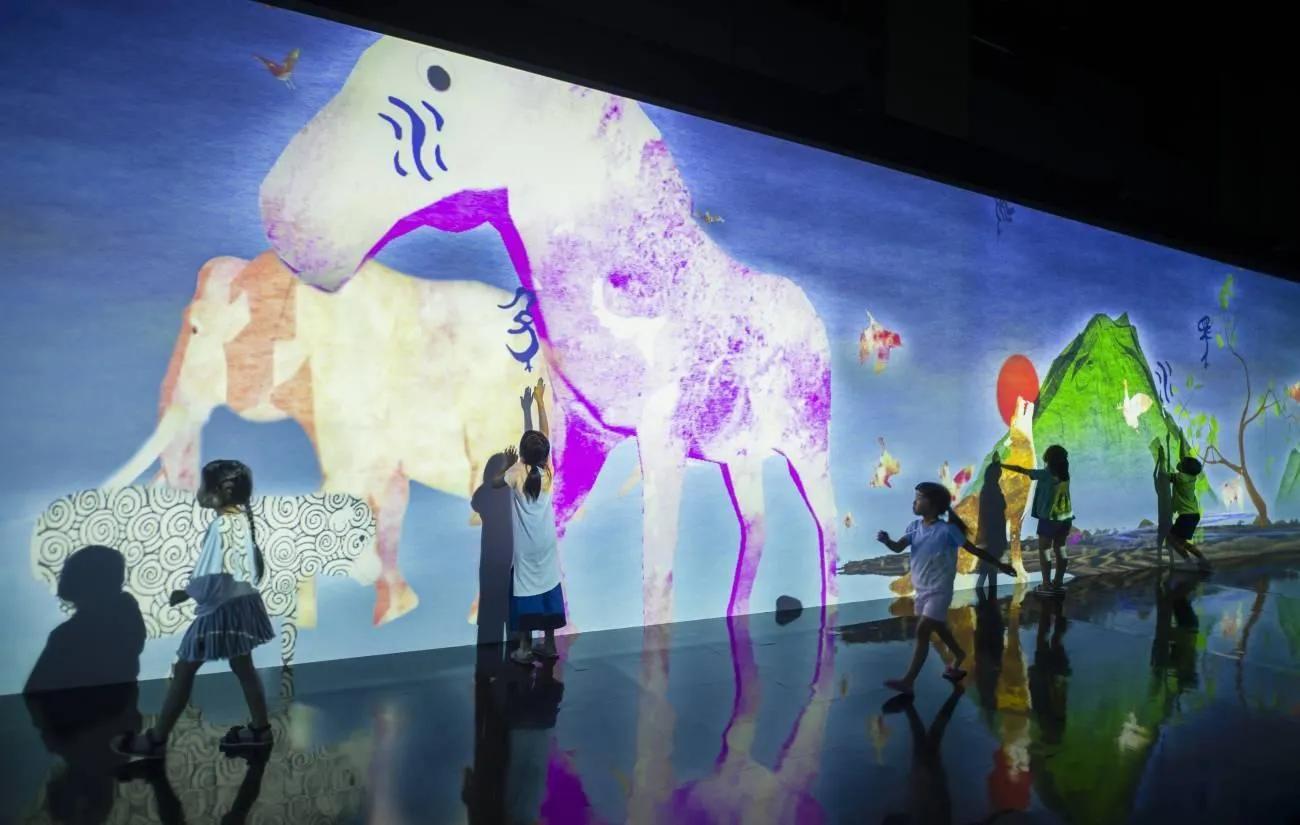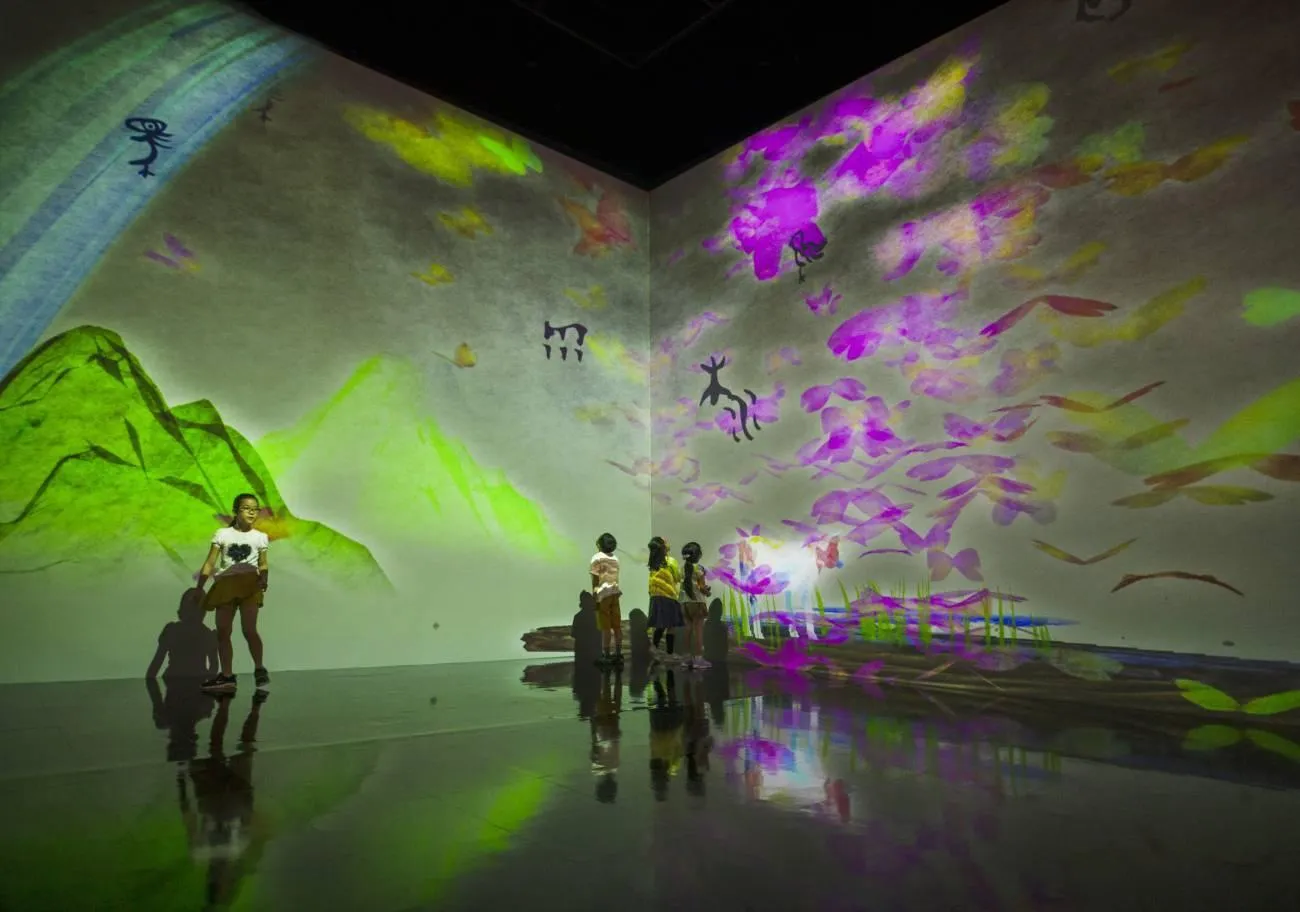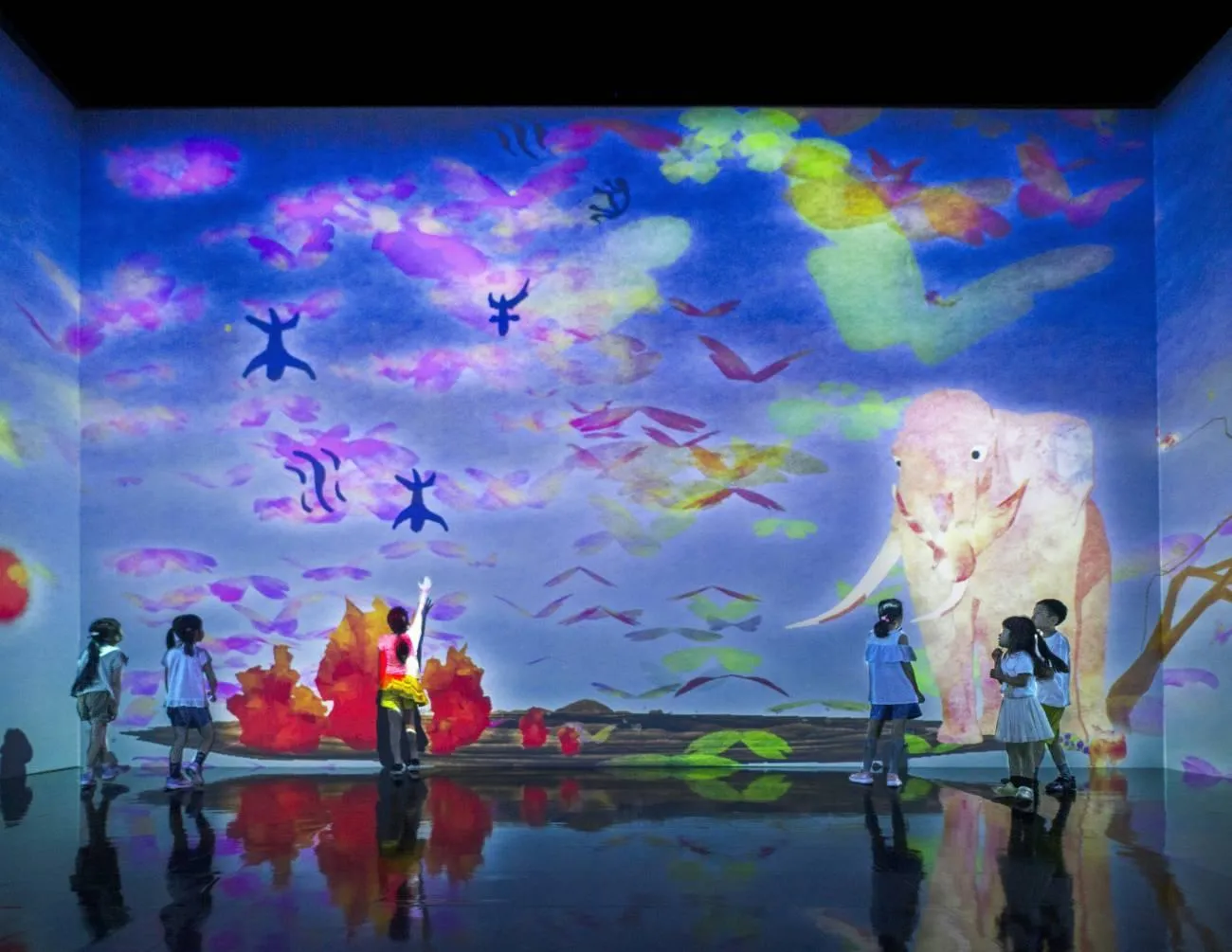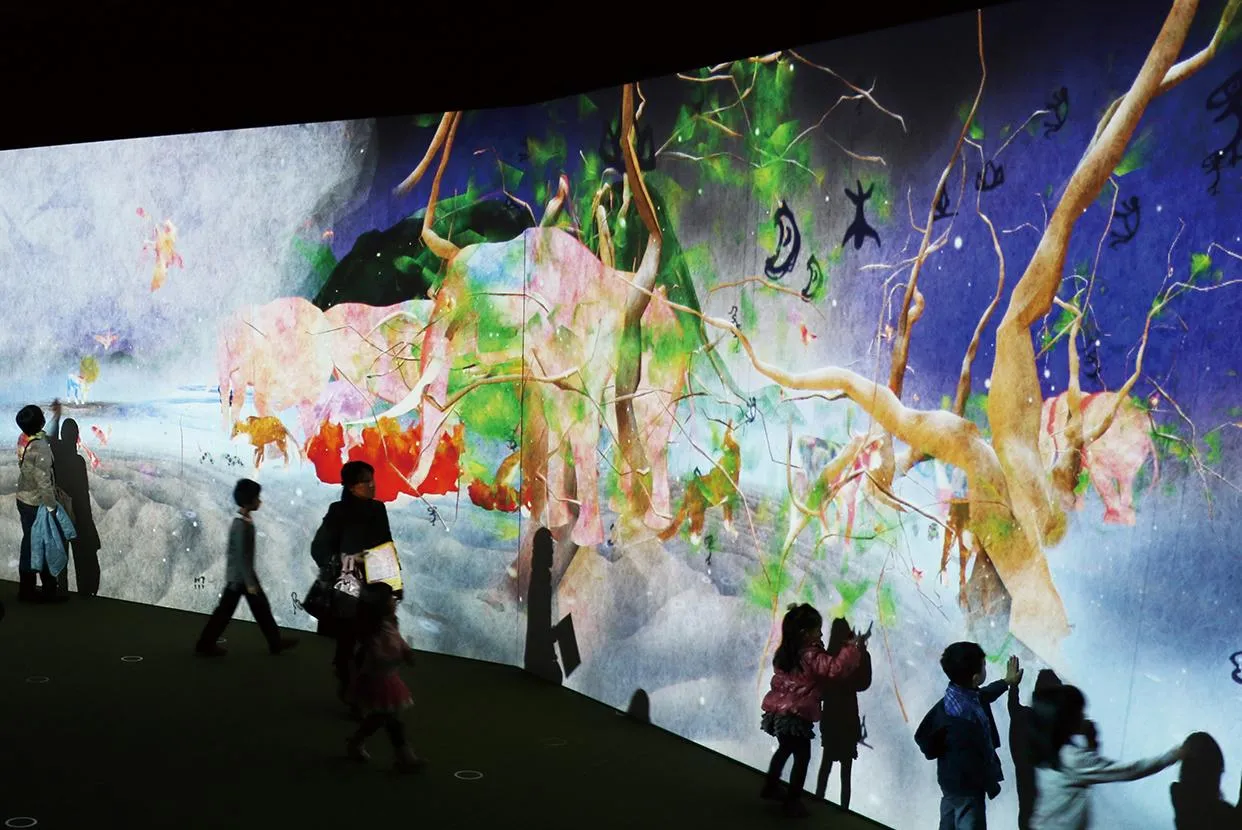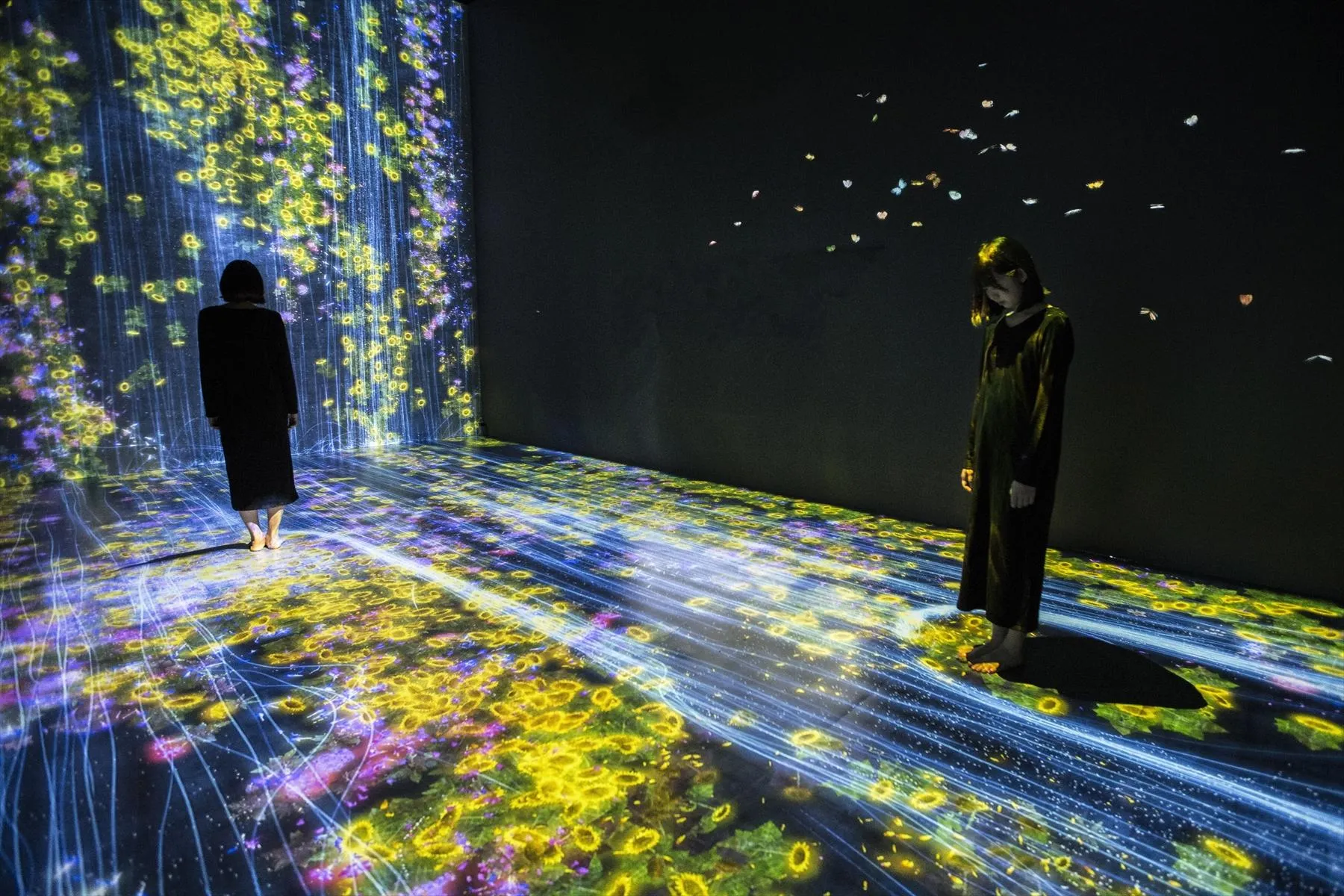Story of the Time when Gods were Everywhere
Sisyu + teamLab, 2013-, Interactive Digital Installation, Calligraphy: Sisyu, Sound: Hideaki Takahashi
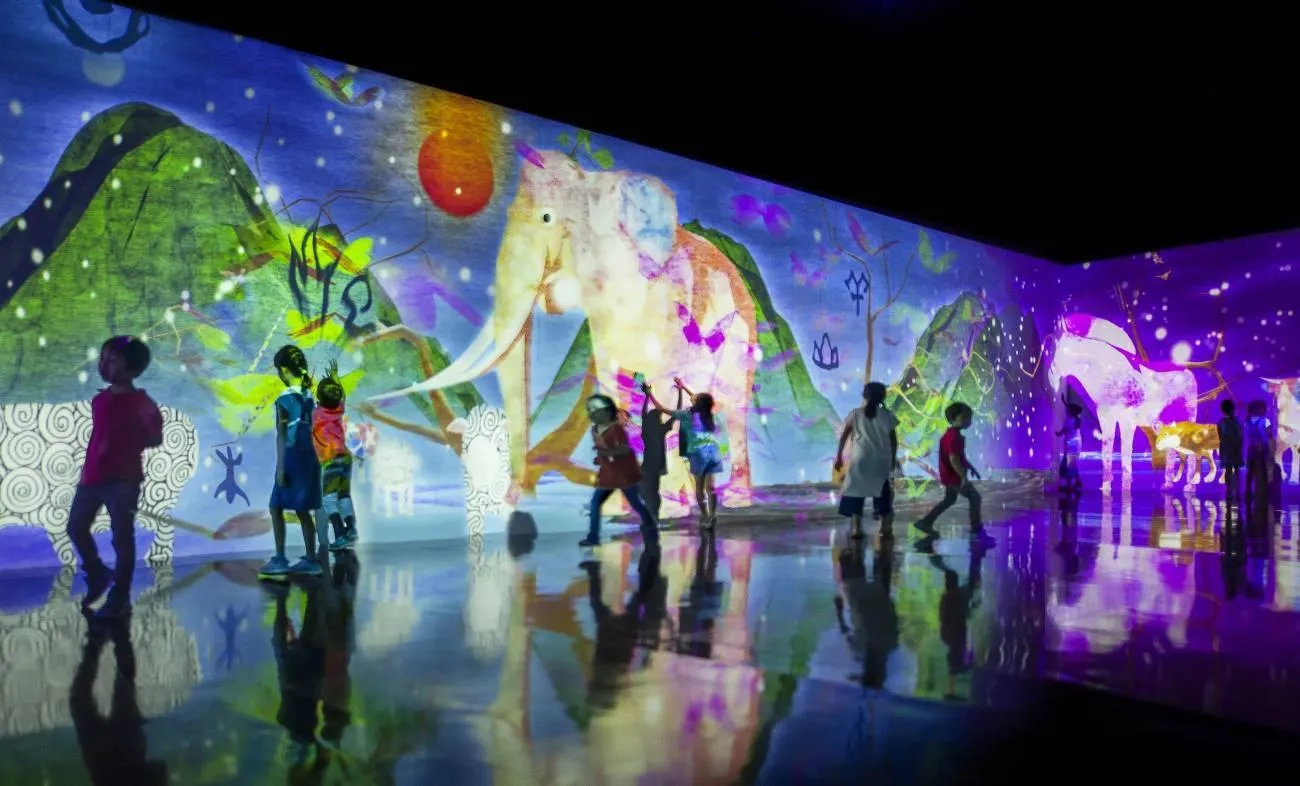
Story of the Time when Gods were Everywhere
Sisyu + teamLab, 2013-, Interactive Digital Installation, Calligraphy: Sisyu, Sound: Hideaki Takahashi
When people touch the characters that represent mountains, trees, birds, etc., that are projected on the wall, the world of the characters appears and a story is born. The objects that emerge from the symbols influence one another and are influenced by the actions of other people. For example, a bird lands on a tree, a sheep runs away from a dog, and a sheep dances as a child approaches it.
Background of Artwork
The origin of Chinese characters
Since ancient times, words have been seen as possessing a spiritual power, the spiritual power of language. However, as words disappear, this spiritual power of language could not reside in words. According to the theories of Chinese literary scholar Shizuka Shirakawa, characters were born so that the power that people invested in words could be sustained and made more effective by putting the words down as pictographs.
Chinese characters are believed to have been created around 1200 BC, during the Shang Dynasty.
Kings of that era communicated with the gods through fortunetelling. Fortunetelling was practiced in connection with rituals and weather, and with every major decision concerning the dynasty, including war, harvests, and hunting. Inscribing records of communications with gods (fortunetelling) on tortoise shells or animal bones in the form of pictographs was the beginning of oracle bone script – that is, Chinese characters.
Reference
Shirakawa, Shizuka. Kanji: Oitachi to Sono Haikei. Iwanami Shoten, 1970.
Matsuoka Seigō. Shirakawa Shizuka: Kanji No Sekaikan. Heibonsha, 2008.
How to interact with the artwork
1
Touch the symbols and observe the response.2
Images will arise from the symbols.3
A story will begin to unfold.
Skills Nurtured
- Pattern Recognition
- Concept of Symbols
- Understanding of Causal Relationships
- Concept of Light and Shadow
